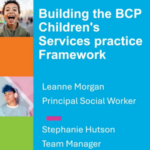
The number of the approved mental health professionals (AMHP) in England has not changed in six years, data has revealed.
There were about 3,800 AMHPs as of March 2025, the same number as in each of the previous three years and as in 2019, according to Skills for Care’s annual report on the workforce in England, based on a survey of AMHP leads.
The report also found that councils were 25% short of the workforce they needed to fully staff a 24-hour AMHP service, in line with the requirements of the Mental Health Act 1983 (MHA) code of practice (see box).
Number of practitioners ‘remains low’ – mental health lead
More positively, the report revealed growth, from 1,500 to 1,600, in the number of full-time equivalent (FTE) AMHPs and a cut in the vacancy rate, from 12.7% in 2024 to 8.3% this year.
However, the number of FTE AMHPs remained “low”, said the Department of Health and Social Care’s (DHSC) mental health social work lead, Robert Lewis, in a post on LinkedIn on the annual workforce report.
The findings also sparked concerns among AMHP leads, who warned that the lack of growth in the number of practitioners came despite services facing increasing demand.
Councils’ AMHP responsibilities
Under section 13 of the Mental Health Act 1983, councils must engage an AMHP to consider a person’s case if it has reason to believe that an application may need to be made to detain them in hospital or take them into guardianship. The AMHP must then make the application if they consider it necessary.
The MHA code of practice states that, to fulfil its duty, councils “should have arrangements in place in their area to provide a 24-hour service that can respond to patients’ needs”.
Most AMHPs carry out role part-time
The report was based on data from 131 of 148 individual local authority-based or shared AMHP services, who between them had approved 3,374 practitioners, on the basis of which Skills for Care estimated there were 3,800 nationwide.
Most practitioners (58%) combined the function with another role, with 27% performing it full-time and 15% not primarily or regularly working as an AMHP.
Based on AMHP leads’ responses about the number of hours professionals worked, Skills for Care calculated that the average practitioner worked 41% of their working week on the AMHP rota, generating an estimate of 1,600 FTE staff.
Workforce 25% short of what’s needed
Based on leads’ responses to how many FTE AMHPs they needed to provide a 24-hour service, Skills for Care calculated that a 25% increase would be needed to achieve this.
Last year’s report identified a 35% shortfall, but Skills for Care said it had improved the methodology for this question in 2025, meaning this year’s result cannot be compared with 2024’s.
Despite the 25% shortfall, AMHP leads reported a vacancy rate of only 8.3%, meaning that the the number of posts being advertised was less than the overall requirement to fully staff a 24-hour service.
The vacancy rate was lower than in 2024 (12.7%) and 2023 (11.2%), while turnover (10.6%) was also lower than that recorded in each of the previous two years (13.4% and 11.8%, respectively). Within this, there was a drop, from 2024-25, in the proportions of workers retiring (2.4%, down from 3.1%) or moving out of AMHP work (3.5%, down from 4.4%).
Twelve per cent of staff had started in an AMHP role over the previous 12 months, with most of these – 7.4% of the workforce – being newly qualified in the role.
Social workers continue to predominate
Despite the stability of the national workforce, six regions saw rises in AMHP numbers from 2024-25 (East Midlands, North East, North West, South East, South West and West Midlands) and three a decrease (Eastern, London and Yorkshire and the Humber), with the South East seeing the biggest percentage rise (6%).
However, the South East had the lowest number of AMHPs per 10,000 population aged 16 and above (0.6), with the North West having the highest (1.03).
The role remains dominated by social workers, with 93% of AMHPs coming from the profession, a slight reduction on the 95% recorded last year, with the proportion of nurses rising from 4% to 6%.
While the social work proportion was at least 93% in eight of the nine regions, it was 66% in the Eastern region, where the remainder (34%) were nurses.
Relatedly, the same region was an outlier in terms of the proportion of AMHPs who were NHS employed (41%), with the proportion nationally being 16%. As last year, local authorities employed 79% of AMHPs.
Workforce diversity
Over three-quarters (78%) of staff were female, though this was lower than the 83% recorded for the whole local authority adults’ social work workforce as of September 2024.
And while 70% of adults’ social workers in councils were white, this was true of 78% of AMHPs, 14% of whom were black, compared with 19% of adults’ social workers.
As in previous years, about a third of the workforce – 31% in 2025 – were aged 55 or over, meaning they could retire over the next 10 years.
Despite this, just 45% of councils had a full workforce succession plan, with 35.9% having a partial plan and 19.1% no strategy at all.
Of those local authorities that had a full or partial workforce succession plan, 39% included routes into AMHP training for NHS-employed staff while 61% did not.
‘Deeply concerning’ lack of growth in workforce
In response to the data, the AMHP Leads Network said the lack of growth in the workforce was “deeply concerning…against a background of increasing demand”.
Latest data on the Mental Health Act 1983 revealed a 2.5% increase in the number of detentions from 2022-23 to 2023-24, on a like for like basis, suggesting a rise in the number of MHA assessments AMHPs had to carry out over that time.
However, the AMHP Leads Network has long highlighted that much AMHP work – in particular practitioners’ roles in managing mental health crises and preventing the need for detention under the act – remains unrecorded and has been increasing over time.
The network added: “The survey highlights that the majority of local authorities have no fully formulated workforce strategies to address this. We would urge directors of social services across England to support their AMHP leads to develop and implement these workforce plans. These plans also need to ensure that they address the disparity in AMHP numbers for our global majority and racialised colleagues.”
In his LinkedIn post, Lewis added: “We need to work across our systems to ensure a much greater focus on the AMHP role – particularly at that point of referral and section 13 consideration – in order to empower these highly specialist colleagues to continue to reduce the risk of inappropriate compulsion, seek better outcomes for the individual, and to provide the necessary support to their loved ones at the point of greatest need.”
AMHP recruitment and retention ‘a key challenge’
Association of Directors of Adult Social Services president Jess McGregor said recruitment and retention of AMHPs continued to be “a key challenge” for councils.
“Recognising the value AMHPs bring preventing situations escalating to needing a Mental Health Act assessment, some local authorities have started offering AMHP training to professionals in children’s and adult services as well as mental health,” she added.
“This expands the pool and expertise of the AMHPs available, which is welcome. However, in addition to training more AMHPs, more must be done to retain people in the role, particularly appreciating the stress these professionals face. For example, when detaining people under the Mental Health Act, they can then wait hours, days or weeks for the right resource to become available because there are insufficient inpatient beds.”
Mental Health Act reform
The figures come with a bill to reform the MHA currently going through Parliament.
The Mental Health Bill has significant implications for AMHPs, including due to plans to tighten criteria for detention under the act and for community treatment orders (CTOs), and in the replacement of the nearest relative role with that of the nominated person, chosen, where possible, by the patient.
The bill has passed through the House of Lords, where it was significantly amended, including through changes made in the face of government opposition.
This includes an amendment creating a new category of “authorised person” – including AMHPs, doctors or mental health nurses – who can carry out detentions under the MHA, having been trained and equipped to do so and on the basis that they were not put at unnecessary risk as a result.
MHA detentions plan ‘is risk to patient and public safety’
This is designed to relieve pressure on the police by enabling other professionals to carry out detentions under sections 135 and 136 of the MHA, where people are in crisis and need to be taken to a place of safety. However, both the AMHP Leads Network and the British Association of Social Workers (BASW) have come out against it.
In a briefing for MPs before the bill’s transfer to the House of Commons, the network said the amendment risked “placing untrained staff in unsafe situations and could undermine patient and public safety”.
It added: “This amendment would expand use of the Mental Health Act inappropriately and weaken the therapeutic response. Whilst we support efforts to improve crisis care, we urge Parliament to reject the amendment and commit to collaborative reform that protects all involved.”







 Bournemouth, Christchurch and Poole
Bournemouth, Christchurch and Poole  Hampshire County Council
Hampshire County Council  Oxfordshire County Council
Oxfordshire County Council  South Gloucestershire Council
South Gloucestershire Council  Wokingham Borough Council
Wokingham Borough Council  Embedding learning in social work teams through a multi-agency approach
Embedding learning in social work teams through a multi-agency approach  The family safeguarding approach: 5 years on
The family safeguarding approach: 5 years on  Harnessing social work values to shape your career pathway
Harnessing social work values to shape your career pathway  Webinar: building a practice framework with the influence of practitioner voice
Webinar: building a practice framework with the influence of practitioner voice  Workforce Insights – showcasing a selection of the sector’s top recruiters
Workforce Insights – showcasing a selection of the sector’s top recruiters  Free CPD on Parkinson’s for health and social care staff
Free CPD on Parkinson’s for health and social care staff 

 Facebook
Facebook X
X LinkedIn
LinkedIn Instagram
Instagram
The AMHP role is primarily a role of a facilitator; being the person responsible to arrange the people who need to be there, the resources needed, and then the last person to leave. It certainly doesn’t feel like a ‘specialist’ role, in fact when everyone else has gone home and your there waiting outside A&E it feels very much like the role of a useful idiot.
Unfortunately, I see the best placed and most experienced people declining the AMHP training because they see what the role actually is – and instead get the NQ or those with little idea of the role taking on the AMHP training .. then moving on shortly afterwards.